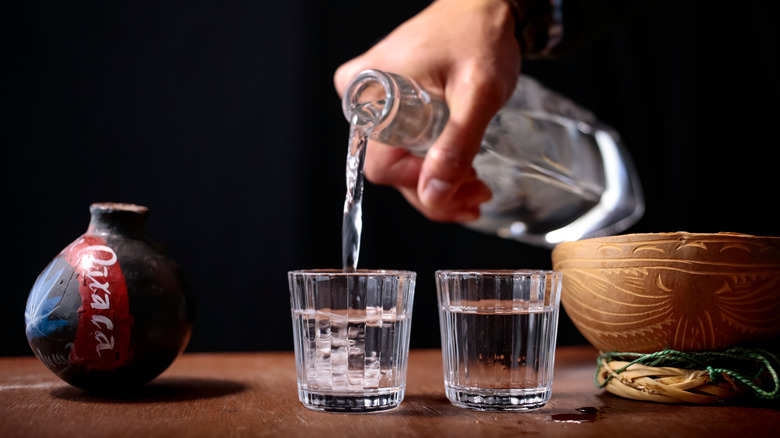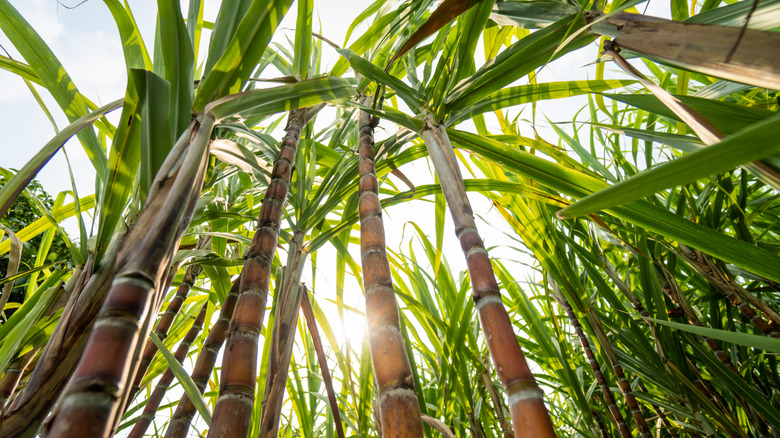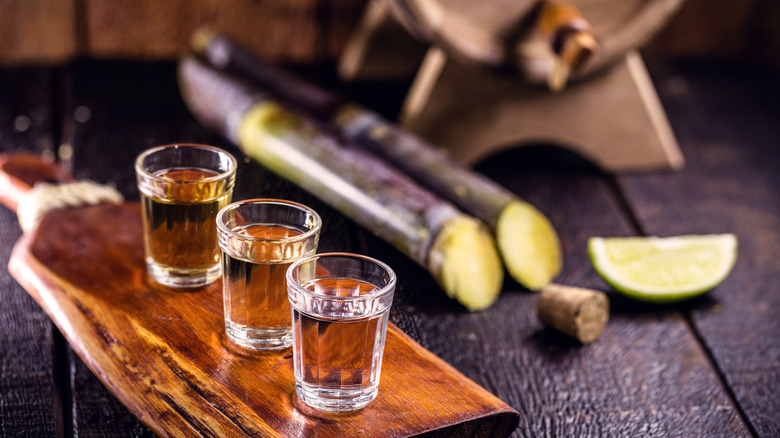Mezcal Lovers Are About To Be Early To The Mexican Rum Trend
For years, it seems that the sole spirit many Americans associated with Mexico has been tequila. The mere mention of the agave-based liquor often rouses mental images that range from rowdy spring break revelers to salt-rimmed margaritas (though there are tons of other tequila cocktails to try). And it doesn't seem its popularity is dwindling anytime soon — Statista reports that the growth of tequila sales in the U.S. has been steady for nearly two decades.
However, in recent years, Mexico's often-smoky spirit mezcal has taken center stage, with production and exports rising exponentially. In 2020 alone, Drizly reported that their platform saw sales of the spirit rise 600%. Meanwhile, Straits Research projects the value of the mezcal market to grow from its $338 million valuation in 2022 to $2.1 billion by 2030, and reports that North America is the region that makes the most significant impact on those numbers. Now, however, Mexican rum is having a "hold my beer" (shot?) moment as the sugarcane-based spirit rises in popularity.
History of Mexican rum
Rum production in Mexico began centuries ago when Spanish colonists brought sugar to the region (via Punch). However, to ensure they could sell their own spirits, the Spaniards imposed a prohibition that prevented the production of homegrown spirits that lasted well into the 18th century. While some still distilled in secret, the production and sales of the spirit were not widespread.
Then, throughout the 1900s, major companies like Bacardi took up a large amount of the market share when it came to sales of rum produced in Mexico, mainly what was sold in the U.S. (via Punch). It is not until more recently that craft distillers' rum has been making its way into bars and shops over the border. Susan Coss, co-founder and director of Mezcalistas, says that mezcal is partially to thank for the increased interest.
"Once people started understanding that mezcal is a higher-end and craft-produced spirit — and seeing that validation in the market — being able to introduce other spirits like rum becomes more of a possibility because you have a market that's more open to understanding and supporting craft distillation in Mexico," she told Punch. It seems Coss' words ring true — and for an example, look no further than the number of Mexican distillers' rums available that may entice mezcal enthusiasts in the U.S.
Why mezcal drinkers will appreciate Mexican rum
Like many mezcals, Mexican craft rums are produced in small batches using tools and styles of distillation that are unique to the maker (via Punch). The spirit is also impacted by the land and the varied climate, contributing further to the diversity of their flavors.
There are two styles of Mexican rum. The first, Charanda, which translates to "red soil" (a nod to the volcanic red soil in which the sugarcane grows), must be made in one of 16 municipalities in the state of Michoacán, per a protected denomination of origin. Because of its terroir-driven nature, flavors will vary among brands, but overall, drinkers can expect both grassiness and sweetness, according to Punch.
The second, aguardiente de caña, is produced in Oaxaca's mountains using a methodology similar to the production of cachaça or rhum agricole (per Punch). Condé Nast Traveler likens aguardiente de caña's flavor, as well, to rhum agricole, noting its grassy style and funkiness.
While serving any new-to-you liquor neat will likely allow you to experience its nuanced flavors, Mexican rum can also be mixed into cocktails. Try trading your typical rum brand for a Charanda or aguardiente de caña in a classic daiquiri, or swap one into your favorite mezcal or tequila-based cocktails.


